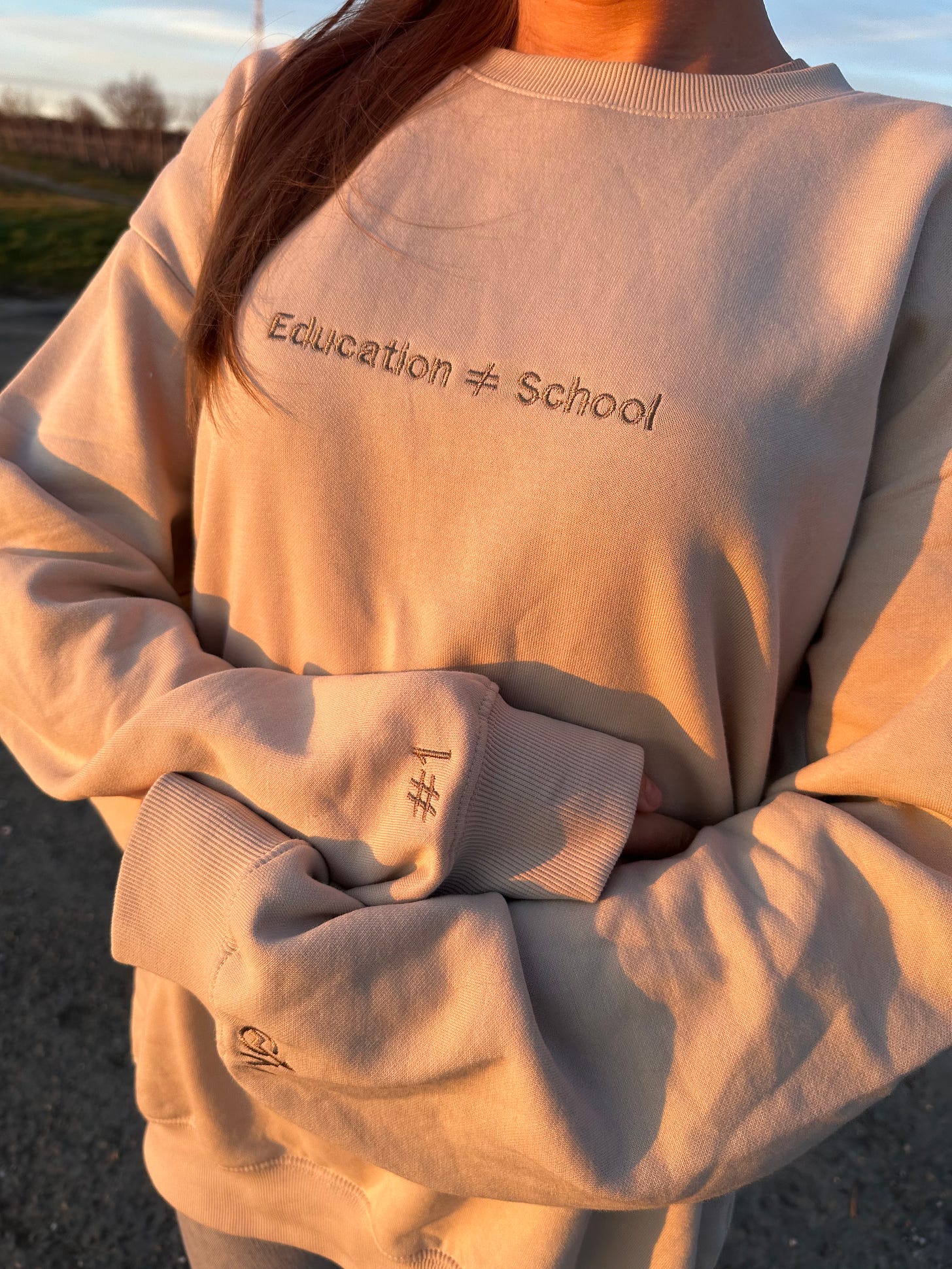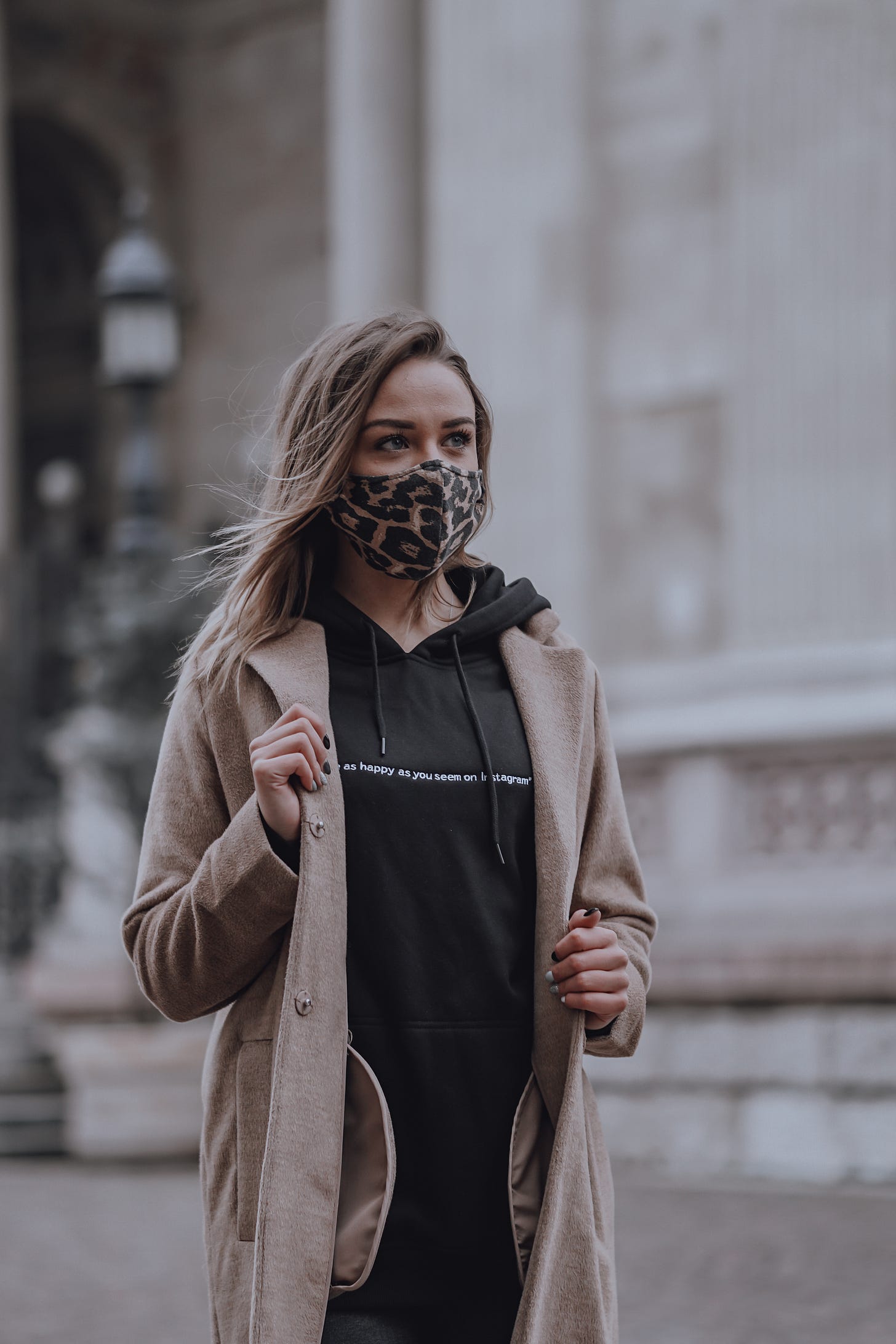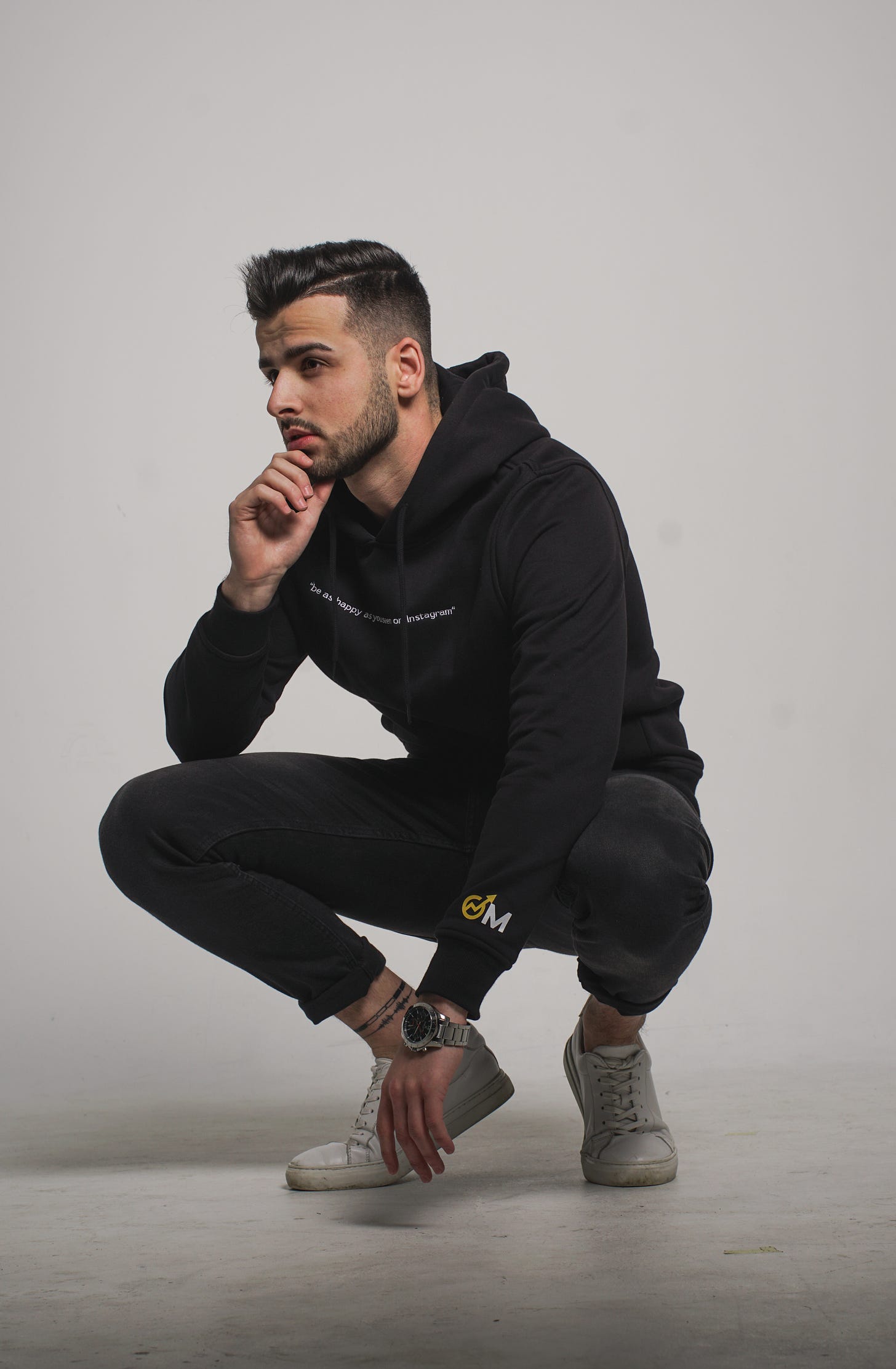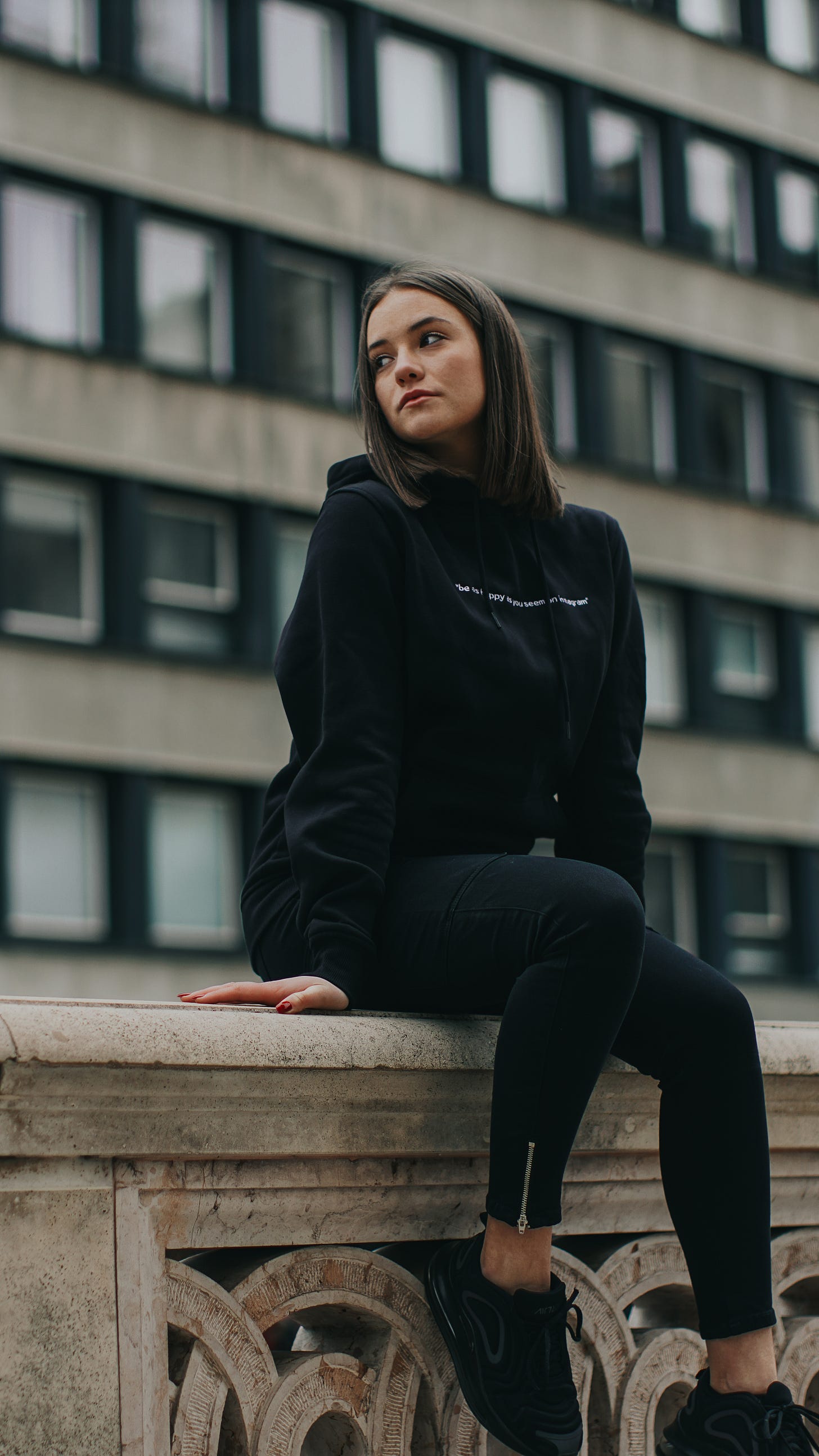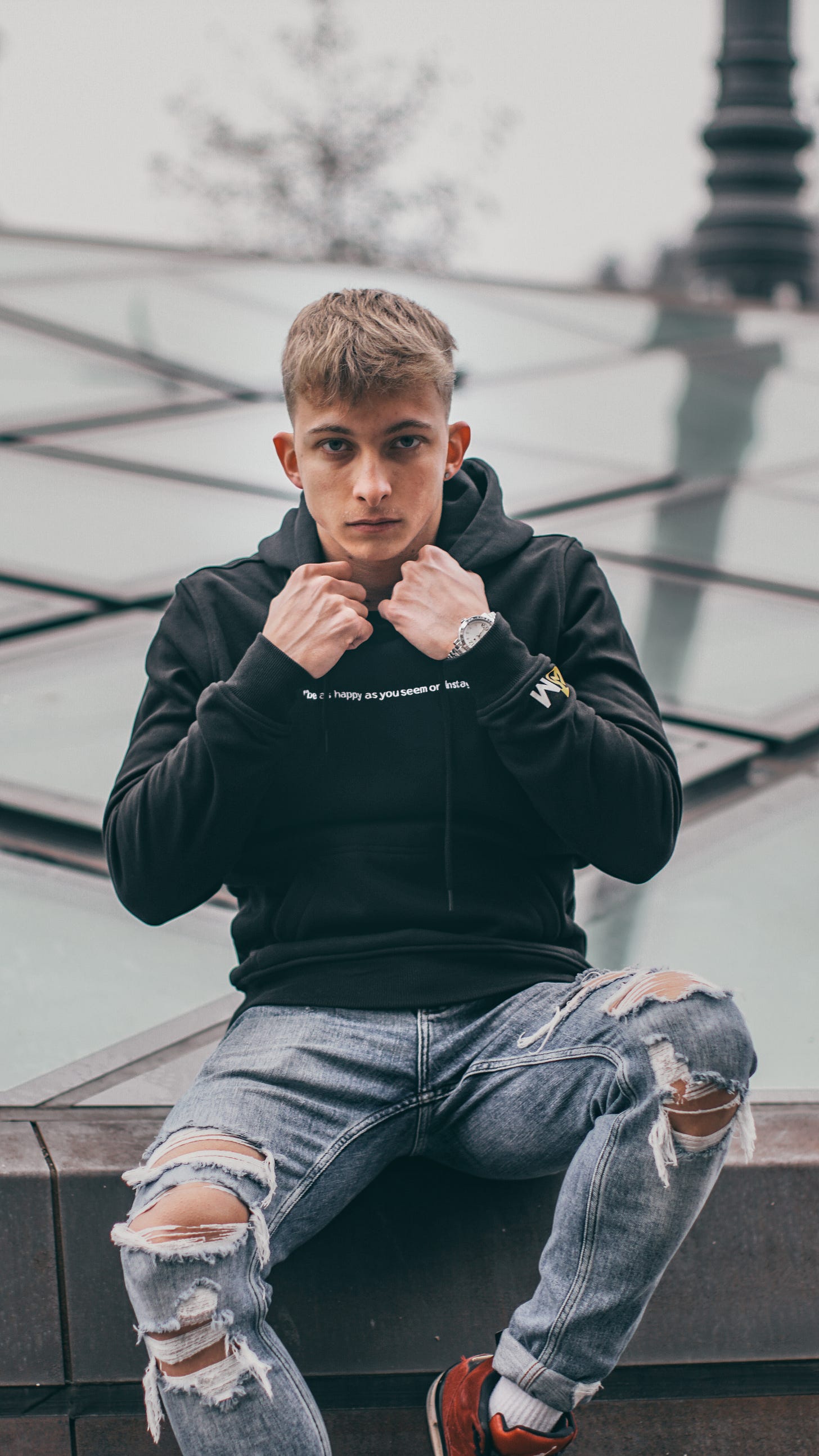👆🏼 You can listen it, up here: 🎧
⏳ Current status
👥 Active users: 1401
📝New Developments: books read so far page 📚
⏰ Time it took to write: 9 hours 9 minutes
This article will help a lot of young people who have seen dropshipping as their only hope. 🫣
I have to tell you right from the start that it is not easy to start your own clothing brand and very few people succeed. I have only 2 collections under my belt and I will share those experiences with you. 🙏🏻
I also had a little help from a podcast where I talked to Peti Csányi, one of the founders of Vates, who has already started his own brand and of course I included his advices! 🎙
But first, let's see...
🚀 How's the challenge?
❓ I have held Customer Interviews
They were 20-minute calls where I talked to BookBase users. I asked a lot of deep questions about using the App and how they would improve it. ☎️
The goal was to keep developing the App the way YOU like it! 🎯
I'll give away a few sneak-peeks here though:
📖 Books read so far will be listed by date
🔥 Rethinking the Streak system
⚔️ Lots of new Challenges
🤫 And 1-2 Secret developments...
I swear to YOU, it was brilliant to see so many people using the App on a daily basis and that the thing we worked so hard for, can really change lives. It's given us a huge boost of motivation. 🔥
📚 7/14 Challenge
We're launching a Challenge soon where we'll work through 7 books together in 14 days. So only 1 book every 2 days! I'm confident that this will bring many new people into the App and get them to at least try it out! 🗓
I already have a list of the 7 books:
🎯 Atomic Habits
🤝 How to win friends and influence people
❓ Find your why
👍🏼 The one thing
💸 The psychology of money
💪🏼 The way of a superior man
❤️🔥 The art of seduction
I've tried to put together a masterpiece of each major topic. So, no matter what topics you're interested in, you're sure to find 1 good read! 😉
Okay now back on track! 🛣
Let's start with...
💭 Why is it worth starting your own brand?
Different people may have different motivations. We are just a little bit different from the average, but relax, I'm going to show you all of them. 🫢
So, the most likely reason for starting your own brand is because you are interested in clothes and want to build a successful business. This is typically the point where it's your passion and you'll do whatever it takes to succeed! 🔥
Or there is Us, who started it because we wanted to try it out and on the other hand, we wanted our existing Brand to be more known. 🤩
2 completely different motivations and 2 completely different goals.
In situation 1, your goal is to sell as many of your own brand clothes as possible and make as much profit as possible on them. Which, when you think about it, is perfectly valid. I would do the same if that was my motivation. 📈
But the 2nd situation is a bit different, the goal here is not to get rich from this, as we already have a relatively successful business called BookBase. Here the goal is to generate as much buzz as possible and sell good quality clothes at a fair price. Which young people will then want to wear and become like a living billboard without feeling bad about it. 😎
📕 Book recommendation: Eric Ries - Lean Startup is an excellent guide on how to start your own clothing brand with the least risk and cost. The book introduces a "lean" methodology to help you get your product to market quickly and keep improving it. It is available on BookBase and can be listened to in 12 minutes. 🎧
If the product is good, people will want to wear it, if they can get it at a fair price, many people will want to buy it. (But I'll talk more about that in the "How to" section).
If there's something about the sweater that the owner can identify with and catches the attention of passersby, well then, you've hit the jackpot. 🎰
💡 Side note: In this case, the message on the sweater, how well it goes with your brand and how well others can identify with it, is incredibly important. This is about the point where it is very easy to slip and we almost did.
💡 Side notes 2: It's important that you can identify with the message yourself. At Vates, I think it started out as literature inspired clothes, because Peti loves literature and saw a niche market in it. But Peti correct me if I'm wrong. 😉
So why it's worth it may vary from person to person, but I'll list a few here:
📈 Increase brand awareness
⚠️ Generating buzz
💻 Generate a generation of excitement
⭐️ Generate a brand value
And many more that I don't know about...
But let's see...
🧐 How to stand out?
Here I'm going to share all the lessons I've learned from these 2 collections and what I learned from Peti during the Podcast.
1. First and foremost - the product
The product itself has to be good. It should be something that reflects your brand, your values and that others can identify with. After all, people wear clothes that they can identify with. 👍🏼
It has to be good quality, because that's the basis of it all. However, it's important NOT to get carried away with the pricing at the very beginning - unless you're launching a luxury brand - because they don't know you yet and will find it harder to pay more. ❌
The price/value ratio has to be very right here. 💸
📕 Book recommendations: Michael Masterson's book Ready, Fire, Aim provides practical advice on how to grow your business and launch your own brand. The book shows you how to focus on what matters and move beyond the pursuit of perfection to succeed. You can find it on BookBase and listen in 12 minutes. 🎧
Try to avoid the really cheesy stuff and the stuff you wouldn't wear yourself. However, don't go overboard and make your first collection out of 100% cashmere. 🐴
2. The quantity
Here you have a big decision to make, whether you want evergreen brands or drops. Both have their advantages. My experience so far is that drops perform well to start with. 🔥
Low volume drops, the key is to always be able to get a sold-out, why? 💰
Because it further generates hype as, for those who wanted to buy it but were left behind, it becomes even more valuable. And for those who did get it, so do they, as they were among the "lucky ones". 🤝
The sooner the drop sells out, the more hype there will be. 🤩
📕Book recommendations: Kevin Kelly's book 1000 True Fans helps you learn how to build a strong, engaged fan base for your clothing brand. The book makes it clear that you only need 1000 real fans to be successful. It's available on BookBase and can be listened in 14 minutes. 🎧
The first collection was 50 sweaters and I pre-purchased all of them, while the second one was only 20, where I ordered them afterwards, I'll explain why in a moment. 🤨
Because here we have had the following problem...
Sizing.🧵
The first collection would have gone in about 5-6 hours if we didn't have XXL and XS sizes. Unfortunately, the L ran out in 13 minutes. So that was a big lesson for me that you should NOT order X number of pieces in advance because, even if you guess the quantity, you don't know the sizes. ❌
So, in the first case I had to pay the money in advance, so my capital was involved and I had to guess the sizes. 😪
Whereas with the second one, I just checked what sizes the supplier had, pre-sold the sweaters and only then ordered them from the supplier. Yes, it was a bit riskier and minimally more expensive + delivery time increased by 1 day. But I didn't risk having the extra sizes on me. ✅
Plus, it made this collection go even faster, as the 20 fastest took the sweaters, no matter the size! 🧠
So for starters, I'd recommend this to everyone to minimize the risks!
The only thing you need to hit here is the quantity! 👀
💡 Side notes 3: Always shoot a little under, if you think 30 would buy, offer 20, if you think only 20 would buy, offer 15. The goal is to get a fixed Sold-out!
3. The supplier
Peti told me in the podcast that one of the biggest lessons he learned was that you need to work with good suppliers who have good systems and can scale with you. 🎙
He told me that the first sweaters were made for them in some small workshop and that he was completely satisfied, the only problem was that they couldn't make 10x as many sweaters. They didn't have enough machines and manpower. So just when they were getting going, they had to find new suppliers. 🧐
It was the other way round with me.
I had my first drop made with a high-class company who could have made up to 1,000 sweaters for me if they had to, the problem was that it cost so much that I just blinked at the end. 😳
I had the second collection made by a small workshop in Eger - made by a young couple who are friends of my brother, so it was worth it just to support them a little - who could make 20 sweaters easily. They were also very nice, flexible and creative. They helped me with color selection, sewing patterns, everything simply. 🧵
So, I realized that the first supplier was very "overkill" for my level.
Why do you need a Ferrari when you can barely drive a scooter. 🏎 ❌ 🛵
And here comes one of the biggest traps...
4. The price
The first collection was super quality, arrived super-fast, only problem with it. The price... 💸
We sold the sweater for 15.000 HUF with shipping, of which the cost price was 13.500 HUF. 🤨
Yes, you read that right... We had 10% profit left on the sweaters. 😳
And yes, here you can refer back to the beginning of the article, "but you are not doing this for the money". 🫡
Which is true, but to make a company sustainable you need cashflow to cover marketing costs, influencers, gift sweaters etc.
I had to realize that this was "suicide". 😵💫
So, for the second collection, I was thinking about how I could cut costs without compromising quality or raising the price. 📉
It became clear that I had to change my supplier because it was too big for me!
I did and we were able to get this sweater out at about 30% profit. 📈
So, our cost price went from 13.500 to about 10.000 HUF.
30% isn't bad, if I look at sustainability 50% would be ideal, but I'll settle for 30 for now. This is enough to be able to spend on marketing. 🤓
I made a big mistake with the first drop by sending everything home and not even offering parcel post. When it is much cheaper and for many people even more convenient. 🚚
So that brings us to the next point...
5. Transport
Learning from my first mistake, I gave 2 options for the second drop. The price is unchanged at 15.000 and includes Parcel Post delivery OR +2.000 HUF for delivery to your door. 🚚
Literally 50% of people asked for Parcel Point. 45% asked for home delivery and I gave it to 1 person personally here in Eger.
We used Foxpost as the parcel point, the sweater fit in the S size wardrobe and the delivery cost 1.499 HUF. But I've heard that Packeta is pretty good and maybe even cheaper. 🦊
💡 Side notes 4: When posting, be very careful NOT to mix up the parcel numbers, because of course it happened to us. 😅 I was very angry at myself because once you close the locker you can't open it... Plus it was evening and customer service was not available to call. However, the next morning Kinga solved it for me, she called Foxpost and they opened the locker for her with the parcel number and she could exchange the parcel, all before the courier took it. So, Mission Completed!
So, I've already managed to get the cost price down and the profit up, with a few minimal changes. 🤏🏼
The next important factor...
6. The sample
I've already mentioned that it's important what the message is on the sweater. We voted on this 2x to make sure we knew which one was the winner.
💡 Side notes 5: If you vote on these questions, your followers will take ownership of the project and be much more likely to buy, as they are part of the process! Old marketing trick + very good feedback too.
That's how we got it on the sweater:
Education ≠ School
Which is great because a lot of people identified with it, plus it reflects the brand value of self-improvement! 👍🏼
In this case you can choose to print or sew the designs. Printing is cheaper, but I don't think it's as high quality, so for us it was a no-brainer to sew EVERYTHING on the sweater. 🧵
I already had the text in the middle, the OM Logo on the left wrist like the previous one, however the right wrist was a bit blank for ME. 🤔
It was important that as there will only be 20 pieces so these need to be made very unique. That's when it popped into my head that we should make each sweater count as to how many are in the collection, so that everyone is assured that there are really only 20 and not 100, and that each one is totally unique thanks to the serial number! 💯
That's why it's written on the right wrist: #1, #2, etc.
That's all well and good, but it's not going to sell sweaters. You need...
7. The pictures and video
Admittedly, in the second campaign, we slipped up a bit. The video and pictures of the first campaign were made for us by the inimitable Kalti. So, it would have been difficult to overdo it and we were short of time.
So, there was no studio, no professional video, just Kinga, the sunset and the iPhone 14 Pro. 😉
It wasn't even close to the quality of Kalti's, but it was enough to make the sweater Sold-out and far better than the pictures where the sweater is just laid on the ground.🙏🏻
💡 Side notes 6: It helps a lot if they see your clothes on models, because then they can imagine the sweater much easier. So, try to get models, even if they're friends, a good camera/phone and a good location and you've upped your chances.
Go to the next step...
8. The campaign
If you're already here, hopefully you've got your sweater, your supplier, your model and the cool pictures/videos. 📈
This is where you decide how you want to market it:
🌟 You can send sweaters to influencers (although this may not be worth it for a small number of pieces)
🎁 You can do giveaways (organic virality)
📸 You can produce content for social media (I mean organic content)
💸 You can publish your best content on social media (TikTok, Insta, Facebook)
💡 Side notes 7: On TikTok, I saw how an American guy who has already made it big with his own brand, how he would get started. He said he would make 150 TikTok about the sweaters, the making, the story, anything related and make 10 different TikTok accounts where he would post them in turn. That's a total of 1,500 opportunities to go viral. He said it's "impossible" not to get one up and running for his company.
Any of them can work the point is to keep the goal in mind. Make it Sold-out, but don't needlessly spend hundreds of thousands on advertising if you could sell it on another channel for 10,000 HUF.🧠
Only one thing remains...
9. The shop
I have also made mistakes with the first collection at this point. We had a full web shop made for it. Luckily, it was a barter system, so it only cost us time and effort. I must add that it turned out to be a brutally beautiful web shop. 🤝
But the added value was not much. ❌
So, I did an experiment to see if I could sell the second collection WITHOUT a web shop! ✅
No domain, no web shop, just a simple form and Instagram Story.
The answer is yes! You can do it without it for starters! 👍🏼
I'll add that I could pay by credit card because I had a software where you could, but I don't think I would have had a problem with the transfer as a start. 💳
However, if you are serious about it, in the long run it is essential to have a web shop, as that is what gives people confidence. And they will take you more seriously from it. 💻
Here are just a few good tips, Shopify is not bad but quite expensive, Woocommerce I think can work just as well and believe me You can learn from 2-3 YouTube videos how to create your own web shop. You don't need to pay 300.000 to someone to do it. 👀
📕 Book review: Chris Guillebeau – Side Hustle offers inspiring and practical advice on how to start a side business, such as your own clothing brand. The book shows how to make your entrepreneurial dreams come true without giving up your day job. You can find it on BookBase and listen to it in 13 minutes. 🎧
I can't say it was long, but I hope you enjoyed it.
Here's your favorite part of the Checklist, let's see...
✅ What exactly do you need to do?
[ ] Decide what you're launching your brand for.
📕 Book recommendations: Simon Sinek's Start with Why is a perfect read here. It helps you define your Why, which will make this whole process easier. It's up on BookBase and you can listen to it in 17 minutes.
[ ] What product would you like (t-shirt, sweater, etc.)? 👕
[ ] Look at least 3 suppliers and rate them on quantity, quality, scalability on a scale of 1-10, all 3. (Gildan makes good quality sweaters, but you can start by sewing on H&M or Zara’s sweaters if they are a good price.) 👀
[ ] Do some market research on how much your target audience would pay for a particular garment, it could be t-shirts, sweaters, whatever. 📈
[ ] Calculate a cost price that includes the clothing, sewing and shipping. Not to mention packaging and such hidden costs. 💰
[ ] When the math comes out, order 1 and have at least 1 sample sweater that you can take photos and videos of. 🧵
[ ] Once you have that take good pictures of it, you can watch Tutorial videos from YouTube on what and how’s. 📸
[ ] Find a model, it could be your boyfriend or girlfriend and take pictures together with the dress on a model. The background and the environment are just as important! 👫
[ ] Make a business plan for your clothing brand, setting out your objectives, market strategy and expected results. This will make it easier for you to track progress and make timely adjustments to your plans if necessary. 📝
[ ] Look at your options and decide where you want to market your brand. 📈
[ ] Start without a web shop and if you've done well with your first drop, then make a web shop for yourself! 💻
[ ] Repeat the process from step 5! 🔁
[ ] Finally, remember that customer feedback is very important. Listen to what they say about your products and try to learn from it. Both positive and negative feedback will help your brand grow. 👍 👎
[ ] Remember that building your own clothing brand is a long-term process. Be patient and don't give up in the face of difficulties. Achieving success will take time and perseverance, but in the end, it will be worth the energy and effort invested. ⏳
[ ] Keep training and learning from the more successful brands. 📚
Probably my longest post ever, but in return I really squeezed in all my experience. I hope you liked it and it inspired you a little to give it a try. If you have any ideas or feedback, feel free to leave them in the comments!
🔥 Challenge
The biggest challenge now is to scale the number of downloads, as our conversion rate is already quite good, we just need to work on downloads to start the exponential growth. 📈
The 7/14 Challenge will be good for this, which can attract a lot of new interest to the App (I think). 📱
This needs to have Promo videos, Content Strategy, the Challenge itself and a lot more. When you get into it, you realize how many small parts are involved and how much you don't know. 🎥
It would be doubly nice if they downloaded the App because of this, because the Challenge might even build the habit into their daily lives, making it easier to pay it forward. 💡
If you have any ideas on how else to convince people to download the App and try it out, write to me on Instagram, because I'm very curious (you don't have to follow me to write). 📮
📖 What have I just read?
I started reading "Innovators Dilemma" by Clayton Christensen. I'm hoping it will help us with HOW and WHERE to integrate AI within the App. 🤖
So far it looks good, but I've only read a few pages of it. 📚
However, I found it on a lot of successful people's reading lists, so I thought it could help US too. 🌟
🎧 What have I listened to now?
I was listening to a podcast summarizing the book "Your Next Five Moves". Not a bad book, but a little disappointing for ME. ♟
I was expecting some examples from chess and I was expecting to get into some serious strategy and business thinking, instead, it was just telling me how to start a Start-up and that too in a very superficial way. 😕
Exceptionally, I don't recommend this book now! 😅
✍🏼 Top quote
"It is easier to follow fashion than to develop a personal style." ~ Ralph Lauren
🧪 Question of the week
Did you like the Newsletter? Send it to a friend, it takes 10 seconds max.
And this took nearly 10 hours to write.
🙏🏻 Thanks for your help! 🙏🏻




